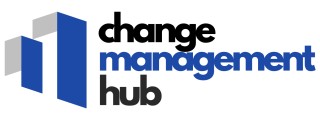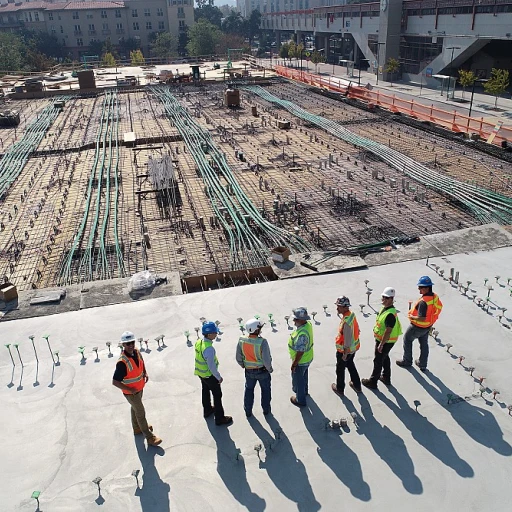-large-teaser.webp)
Understanding the Source to Settlement Process
Grasping the Fundamentals of Source to Settlement
The source to settlement process is a comprehensive journey encompassing all steps needed to acquire goods and services, from sourcing to final settlement with suppliers. It's a crucial component of procurement that demands meticulous attention to ensure efficiency and cost-effectiveness. Each phase in this journey presents unique complexities and requires a strategic approach to supplier management. Understanding this process starts with recognizing its core elements:- Sourcing: This initial stage involves identifying potential suppliers and evaluating their capabilities. Strategic sourcing is not just about finding the best price but also about assessing quality, reliability, and business alignment.
- Procurement: Once the sourcing is complete, procurement focuses on creating purchase orders and ensuring compliance with contracts. Procurement software can streamline this phase by improving visibility and operational efficiency.
- Contract Management and Invoicing: After procuring goods or services, managing contracts becomes critical to avoid disputes and ensure that all terms are met by both parties. Proper invoice processing ensures accurate accounts payable operations, minimizing payment delays.
- Settlement: The final step involves settling payments with suppliers. It's not only about paying invoices but also about maintaining healthy supplier relationships which contribute to long-term cost savings and risk management.
The Role of Change Management in Source to Settlement
Importance of Change Management in the Procurement Journey
In the intricate landscape of procurement processes, change management serves as a pivotal component that directly influences the success of sourcing to settlement operations. With a myriad of steps involved from strategic sourcing to supplier management and invoice processing, implementing effective change strategies can significantly streamline the transition, mitigate risk, and enhance the overall financial management of a business.Enhancing Procurement Strategies
Change management is fundamental in enhancing procurement processes to achieve cost savings and operational efficiency. By carefully orchestrating how changes are introduced and managed, organizations can ensure a seamless integration of procurement software, improving data visibility and minimizing disruptions in the supply chain.Realizing Effective Supplier Relationships
Properly executed change management enables better supplier relationships by fostering a collaborative approach in contract management and supplier negotiations. This can lead to favorable procurement terms, reduced costs, and an optimized pay and settle process.Implementing Procurement Software
The introduction of management software into the procurement process necessitates comprehensive change management to accommodate the new tools and techniques. Such software can automate purchase order processing, improving accounts payable management and enabling real-time data analysis, critical for informed decision-making. To delve deeper into creating effective strategies for implementing change in procurement, the article "Crafting an Effective Sales Workshop Strategy" provides valuable insights on aligning change initiatives with business objectives.Identifying Challenges in the Source to Settlement Journey
Overcoming Common Obstacles in the Journey
The path from sourcing to settlement, also known as the procure-to-pay cycle, is fraught with potential challenges that can disrupt the flow and efficiency of business operations. As organizations endeavor to streamline their procurement processes, they often encounter hurdles that require strategic management. Here, we examine some of these challenges and explore how they impact the journey from source to settle.
Lack of Visibility and Control
A significant challenge in the source to settle journey is the lack of visibility into the procurement process. Without real-time data and comprehensive oversight, companies struggle with transparency in supplier transactions. This lack of visibility can lead to inefficiencies and cost overruns, compromising the effectiveness of the supply chain.
Complex Supplier Management
Managing supplier relationships efficiently is another perennial challenge. Organizations often deal with multiple suppliers, making it crucial to establish seamless communication and effective contract management. The inability to efficiently manage supplier data and relationships can cause delays, impact payment schedules, and even hinder supply chain continuity.
Integration of Software Solutions
Procurement software plays a pivotal role in enhancing operational efficiency, yet integrating these solutions into existing financial and procurement processes can be challenging. Companies often face difficulties in harmonizing procurement software with current systems, which can create silos and disrupt workflow automation.
Risk Mitigation in Supply Chains
Risk management is essential in procurement processes to avoid financial losses and ensure compliance. Yet, identifying and mitigating risks in the supply chain remains a complex task. This includes exposure to geopolitical risks, fluctuating costs, and unpredictable supplier performance.
As organizations strive to navigate these challenges, leveraging strategic insights becomes imperative. Enhancing adaptive thinking skills for effective change management is crucial in adapting to the dynamic procurement landscape.
Strategies for Effective Change Management
Implementing Change Tactics for Optimal Sourcing and Settlement
Incorporating effective change management tactics is crucial for ensuring success in the sourcing to settlement process. The key challenge in this process is the alignment of procurement strategies with necessary operational changes. By adopting strategic approaches, businesses can transition smoothly and efficiently.- Focus on Communication and Training: Clear communication is paramount in managing change across the supply chain. Consistent updates regarding process transitions can prevent misunderstandings and resistance. Additionally, training programs for employees and suppliers help in familiarizing them with new procurement software and procedures, reducing friction and improving efficiency.
- Adopt Scalable Procurement Software: Utilizing scalable software solutions can enhance real-time visibility and streamline the procurement process. By optimizing data management and enabling seamless integration with existing systems, companies can reduce payment uncertainties and bolster supplier relationships.
- Leverage Data Analytics for Decision Making: Data-driven decision-making can drastically improve sourcing processes. By analyzing procurement data, businesses can identify potential cost savings and risk elements, enabling more informed purchasing decisions and better supplier contracts.
- Enhance Supplier Collaboration: Building strong supplier relationships is another pivotal strategy. Open dialogue between stakeholders ensures that all parties understand the accountabilities in the procure-to-pay process, aiding in more transparent and effective contract management.
- Streamline Processes for Cost Efficiency: Emphasizing operational efficiency by refining accounts payable and invoice processing can lead to substantial cost reductions. Simplified purchase order workflows contribute to quicker settlement processes and improve overall business performance.
Case Studies: Successful Change Management in Source to Settlement
Illustrative Examples of Change Management Success
When navigating through the source to settlement journey, successful change management practices can be the difference between smooth adaptation and process disruption. Let's explore some examples of businesses that have effectively managed change in their procurement and supplier processes. These cases can serve as valuable references for enhancing your own strategies.- Streamlining Procurement Processes: One company harnessed the power of procurement software to enhance operational efficiency. By standardizing their purchase order system and integrating real-time data analytics, they achieved remarkable cost savings. The key was comprehensive supplier management, which improved supplier relationships and reduced costs in the procurement process.
- Enhancing Accounts Payable Efficiency: In another example, a business implemented advanced invoice processing systems to expedite the settle procure process. By utilizing automation in their accounts payable, they reduced errors and delays, leading to improved cash flow and increased visibility across the financial supply chain. This change was supported by effective contract management and strategic sourcing techniques.
- Optimizing Risk Management: A forward-thinking firm took a proactive approach to risk management by deploying sophisticated management software. The transition involved thorough training and collaboration with key stakeholders in the supply chain. By aligning their risk management strategies with the procurement process, they minimized disruptions and achieved greater consistency in their supplier engagements.
Future Trends in Source to Settlement and Change Management
Emerging Trends and Innovations in Procurement
The procurement landscape is constantly evolving, driven by technological advancements and shifts in market dynamics. As businesses continue to seek cost savings and operational efficiency, the integration of advanced software and strategic sourcing processes is becoming more prevalent. In the realm of source to settle, staying ahead of these changes is crucial for maintaining competitive advantage.- Digital Transformation: The utilization of procurement software is revolutionizing the way organizations manage their supply chain. By offering real-time data processing and visibility across procurement processes, companies can enhance their supplier relationships and streamline the settle process.
- Automation and AI: Automation technologies, along with artificial intelligence, are increasingly being integrated into procurement processes. These innovations aid in eliminating manual tasks, allowing for efficient invoice processing and accounts payable management. Consequently, this supports cost effectiveness and strengthens supplier management.
- Enhanced Data Analytics: In order to gain deeper insights, businesses are investing in advanced data analytics tools. These tools facilitate strategic decision-making by providing a comprehensive view of procurement processes, from sourcing to payment, enabling precise contract management and risk management.
- Sustainability and Ethical Sourcing: As the global focus on sustainability intensifies, businesses are placing more emphasis on ethical sourcing. This commitment not only ensures compliance with regulatory standards but also enhances the public image, thus supporting long-term supplier relationships.
- Supplier Collaboration: Future trends also point towards increased collaboration with suppliers. By fostering transparent communication and strategic partnerships, organizations can drive innovation and enhance service delivery, thereby optimizing the procure to pay journey.













